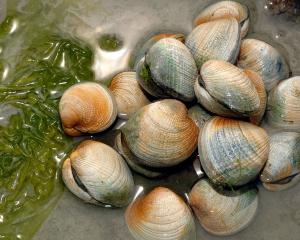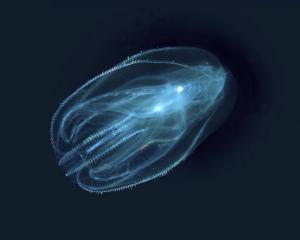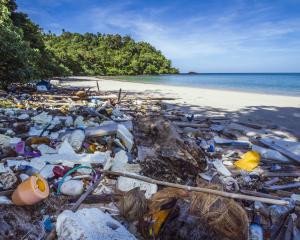
When you sit down at the fanciest restaurant in town, a few menu items immediately signal luxury (and expense): Champagne, lobster and caviar.
Strictly speaking, caviar is the salt-cured roe (eggs) of wild sturgeon from the Caspian and Black Sea. In real life, people use the term for many kinds of fish eggs, including salmon, trout and even carp. People spread the little spheres of saltiness on crackers or bread or pancakes, or sprinkle them over soups or salads. Top-quality caviar from endangered fish can cost more than $300 per gram. Good to know that our ethical choice not to buy it is also the economic one.
It’s not often that we stop to think about fish eggs. Or coral eggs, or starfish eggs, or octopus eggs, or all the other eggs, sperm, embryos and larvae in the sea. But they are out there. If you are a marine organism planning to reproduce sexually, especially if you are attached to the rocks, you have several problems to solve.
The first one is, how do you get eggs and sperm to the same place at the same time? Some animals, such as sponges and numerous worms, are hermaphrodites, producing both eggs and sperm. Usually they don’t do so at the same time, in order to avoid self-fertilisation. They live in groups, and hope that they fertilise each other.
Sea anemones, crabs, and octopus solve the problem by getting two adults together, then arranging internal fertilisation. Adult copulation allows fertilisation to be carefully regulated by one or both parents — often resulting in complicated courtship behaviours. It’s not just birds (and people) that do this: both segmented marine worms and squids, for example, have complicated light and colour displays designed to attract just the right mate.

OK, now you’ve got a fertilised embryo, floating in the water. How do you keep junior alive while she is developing? Many marine organisms glue their embryos down somewhere relatively safe and leave them to their fate — seawater is a benign environment, and usually they have produced so many that quite a few will make it through. Other marine organisms are brooders — that is, they keep their developing babies within the protective sphere of one of the parents, and only release them when hatched. Giving birth to live young is somewhat less common in the ocean.
When junior emerges, she is a tiny larva, less than 2mm in size. Many marine creatures have a larval stage; these larvae float around in seawater, forming a major part of zooplankton (and food for larger critters). Larvae don’t look much like mum or dad — they are surprisingly alien-looking (and, often, rather cute).
If larvae survive to grow large enough, they settle down and metamorphose. Most of us learned in preschool about how the caterpillar becomes a butterfly, but marine plankton also change into a diverse range of adults. A baby sea urchin looks like a spiky glass vase, a larval octopus is almost cuddly, and larval crabs look like little spiders. For bottom-dwellers, the larval stage is the only time in their lives that they experience the open ocean. Some can travel long distances, between islands or even across ocean basins. Once larvae settle down, they start eating, growing, and getting ready to reproduce.
And so the generations cycle endlessly around. Or do they? Embryos and larvae are vulnerable to a wide range of stresses. They are tiny, yummy and unable to choose their environment, subject to the whim of the ocean currents in which they are floating. Even without human intervention, most fish embryos and larvae don’t survive.
Environmental changes caused by people, such as warming water, increased sediments and chemicals in the water, acidification, artificial light and sound pollution, tend to affect tiny embryos and larvae more than the larger animals that eat them. Such stresses can cause slowed larval development, abnormal shapes, or failure to grow into an adult.
Sperm and eggs, embryos and larvae are the most vulnerable stages in a marine organism’s life. Like the weak link in a chain, if they don’t survive, neither does the species — as good a reason as any to leave the caviar alone.
- Abby Smith is a professor of marine science at the University of Otago. Every week in this column writers address issues of sustainability.












